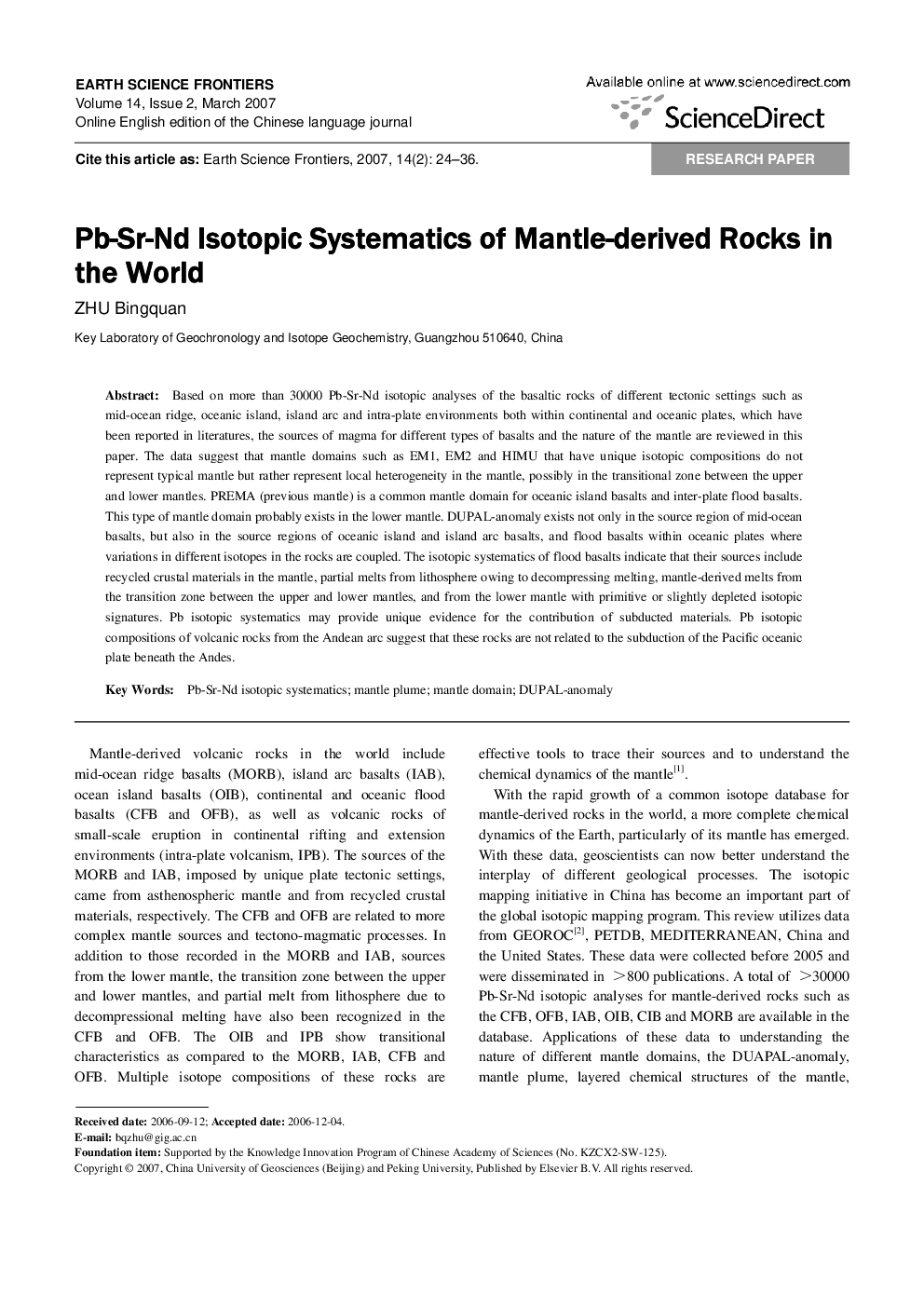| Article ID | Journal | Published Year | Pages | File Type |
|---|---|---|---|---|
| 4701691 | Earth Science Frontiers | 2007 | 13 Pages |
Based on more than 30000 Pb-Sr-Nd isotopic analyses of the basaltic rocks of different tectonic settings such as mid-ocean ridge, oceanic island, island arc and intra-plate environments both within continental and oceanic plates, which have been reported in literatures, the sources of magma for different types of basalts and the nature of the mantle are reviewed in this paper. The data suggest that mantle domains such as EM1, EM2 and HIMU that have unique isotopic compositions do not represent typical mantle but rather represent local heterogeneity in the mantle, possibly in the transitional zone between the upper and lower mantles. PREMA (previous mantle) is a common mantle domain for oceanic island basalts and inter-plate flood basalts. This type of mantle domain probably exists in the lower mantle. DUPAL-anomaly exists not only in the source region of mid-ocean basalts, but also in the source regions of oceanic island and island arc basalts, and flood basalts within oceanic plates where variations in different isotopes in the rocks are coupled. The isotopic systematics of flood basalts indicate that their sources include recycled crustal materials in the mantle, partial melts from lithosphere owing to decompressing melting, mantle-derived melts from the transition zone between the upper and lower mantles, and from the lower mantle with primitive or slightly depleted isotopic signatures. Pb isotopic systematics may provide unique evidence for the contribution of subducted materials. Pb isotopic compositions of volcanic rocks from the Andean arc suggest that these rocks are not related to the subduction of the Pacific oceanic plate beneath the Andes.
